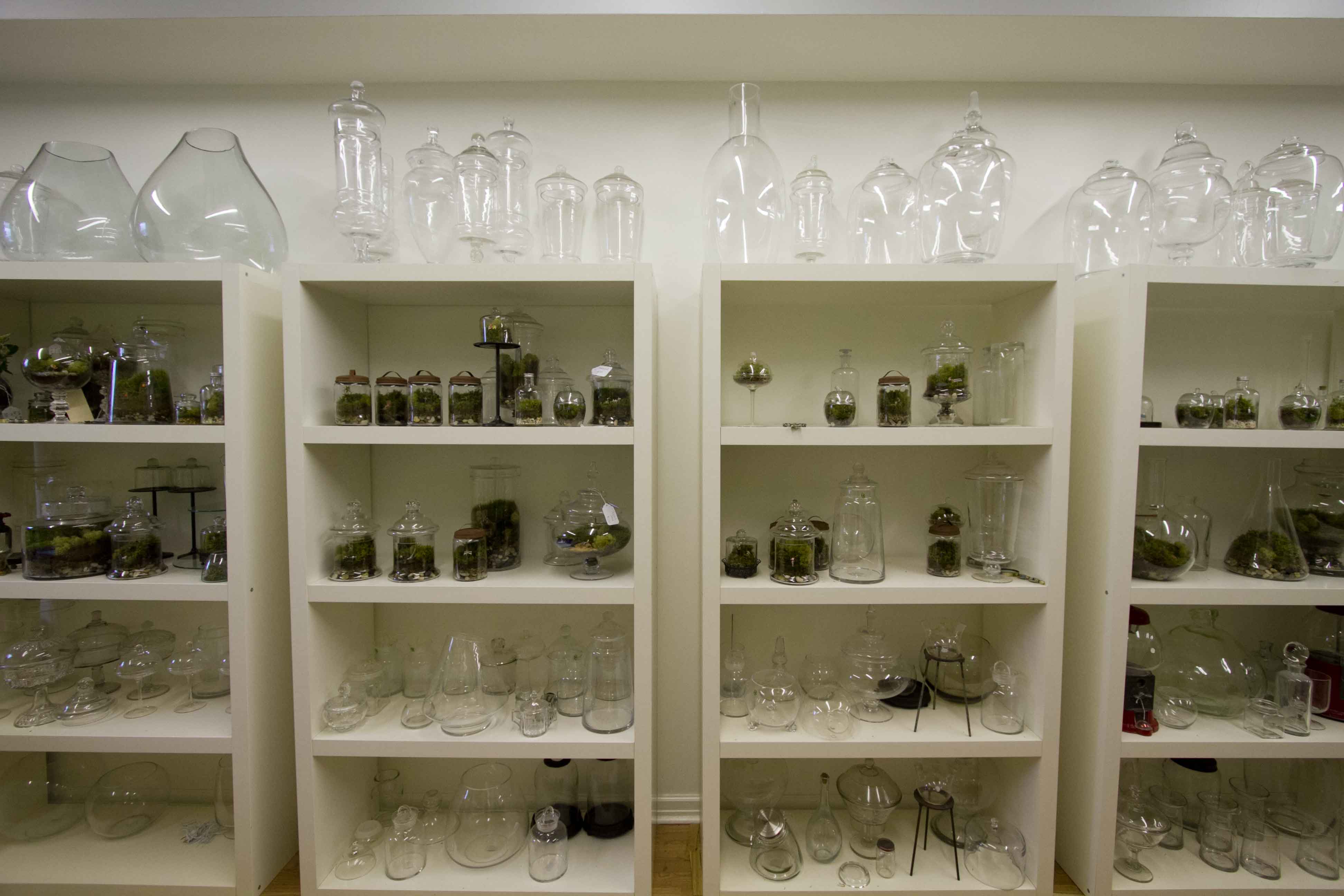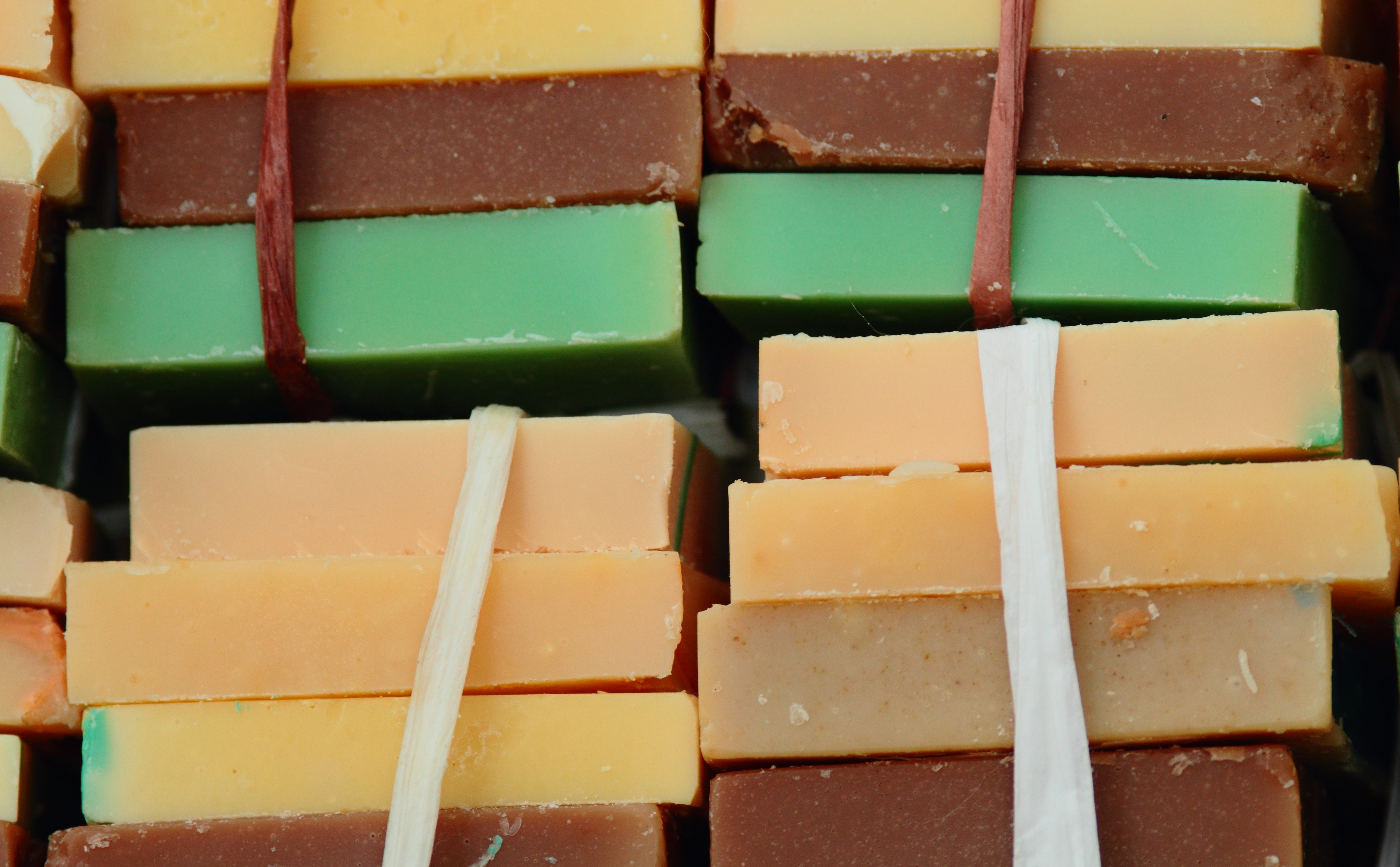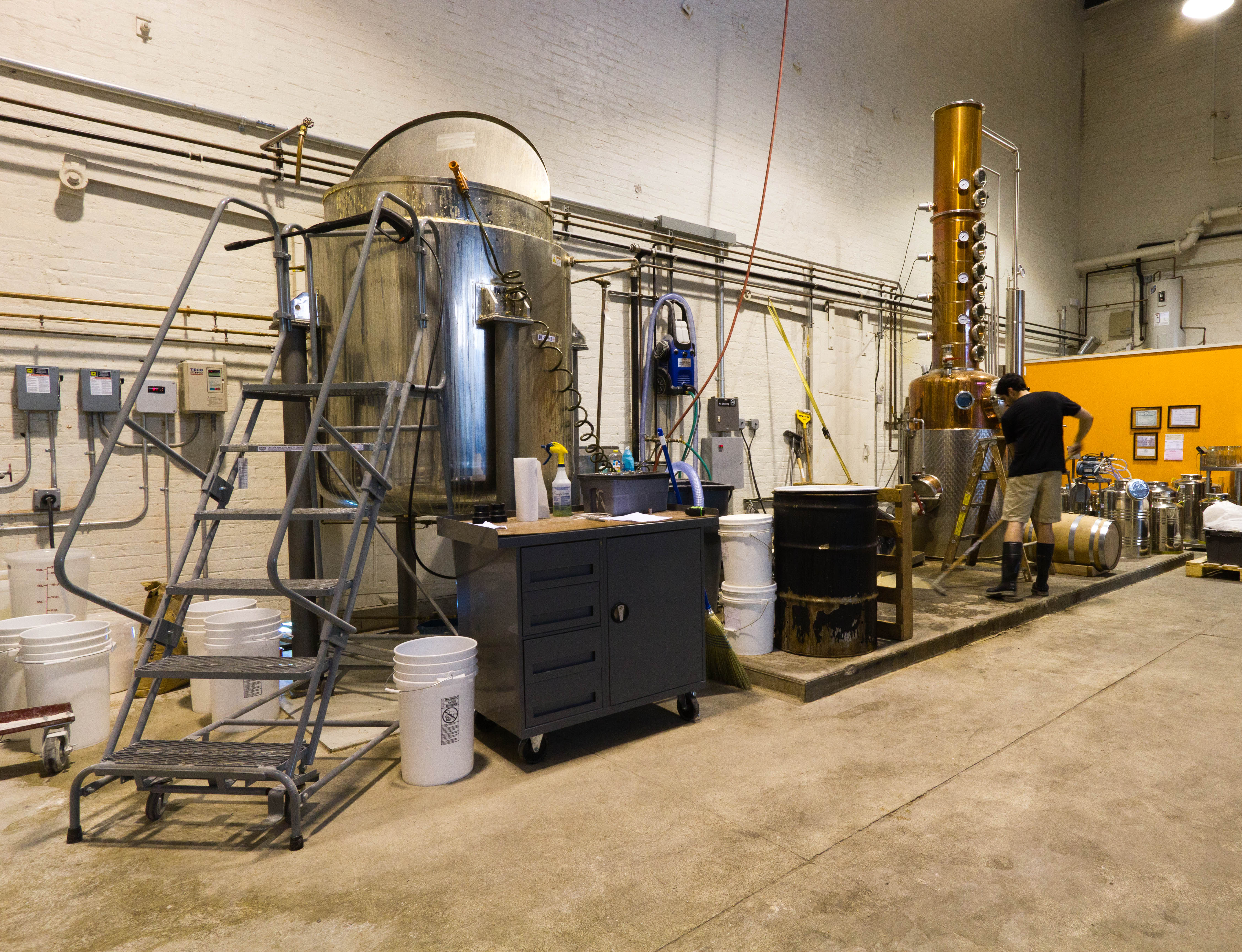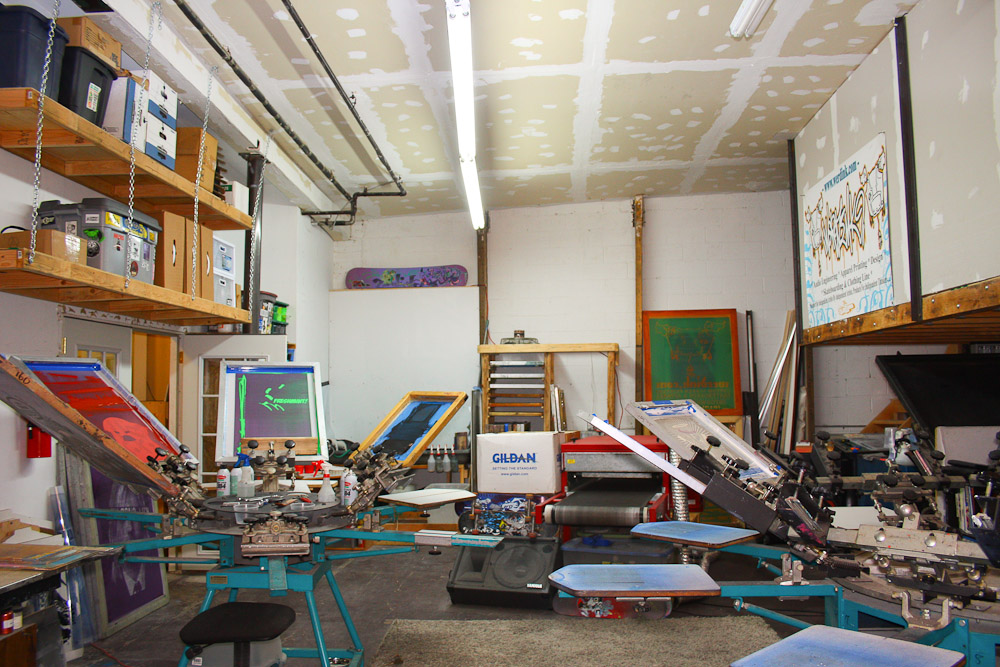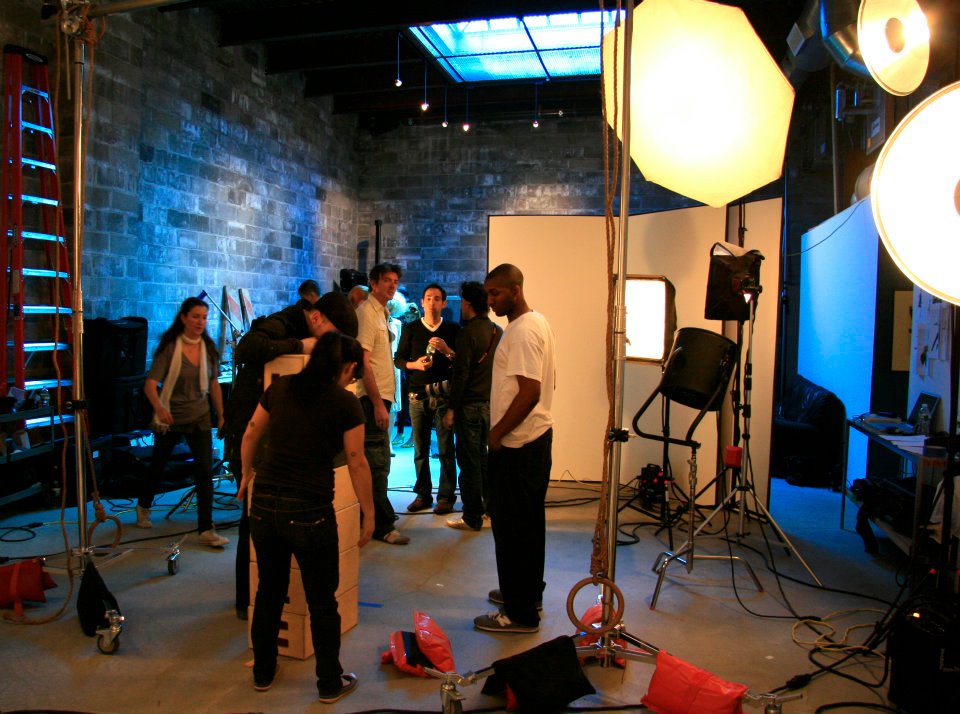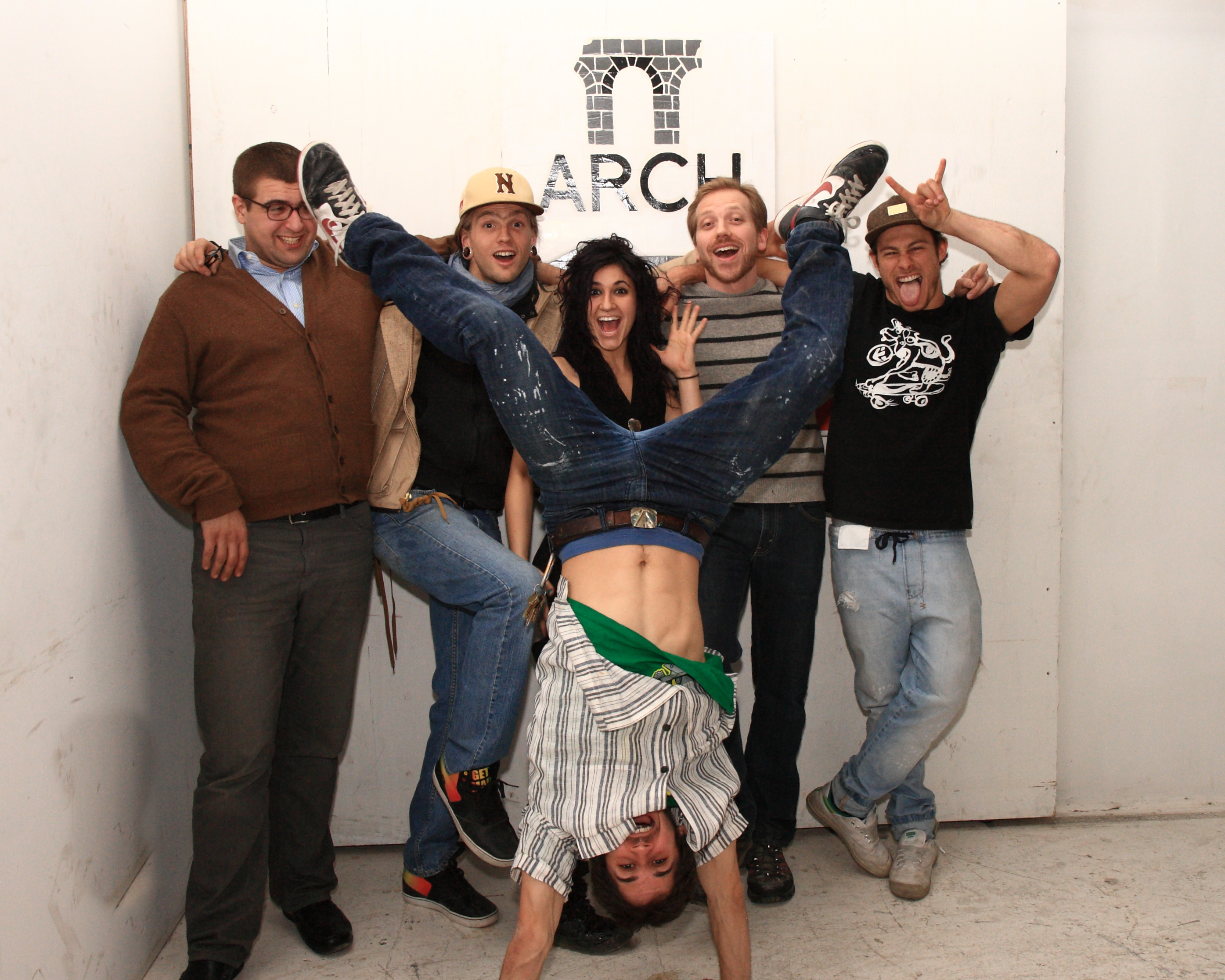acme studio
space type: photo studio & prop house | neighborhood: williamsburg | active since: 2010 | links: website, facebook, twitter, tumblr
Listen, I’ve been to a lot of wacky spaces through this project, but Acme is one of the wackiest. It’s just teeming with the wildest array of things—figurines and furniture and statues and taxidermy and instruments and tchotchkes of all shapes, sizes, and hues. Even the bathrooms are like tiny stuff galleries! And the most amazing part? It’s the most organized chaos I’ve ever seen.
Acme is a one-stop shop for your film and photo needs: run by industry veterans, they can do everything from designing and custom-building a set, to supplying a dizzying array of props, to shooting the whole thing. And they certainly have done all that, for increasingly high-profile clients, from Missy Elliot to Zac Efron to Heidi Klum. They shot the David Cross cover for Brooklyn Magazine, hosted the secret premier of season two of Girls with HBO and Flavorpill, and throw fabulous fundraisers for the Burning Man camp A Cavallo. And they also hold benefits, parties, lectures, classes, and more, and are always open to new ideas for fabulous uses of this fabulous space. So hit ‘em up with your ideas, and go check out an event or two! But first read my interview with operations manager Brian Colgan.
brooklyn spaces: How did this all come about?
Brian: It was started by Shawn Patrick Anderson, a set designer and prop stylist. He had a storage and workspace down by the Navy Yard that was full of all this crazy stuff, and people kept wanting to do photos and videos there. He had a series of kind of high-profile shoots there, like Sonic Youth and the band Chairlift, and finally he was like, “What if this could actually be a thing?” Most studios are just a big empty white box with a cyc, that big curved white wall that you do the photo shoot in front of. They’re totally sterile and boring, and you have to bring everything in with you. So the beauty of Acme, what Shawn realized people were responding to at his studio, is why not have a crazy amount of stuff in the studio that people can use in their shoots?
brooklyn spaces: So are you guys actively amassing more stuff?
Brian: We’re always amassing more stuff. There’s so much stuff! It’s really a question of deciding what makes sense to keep, which is always tough.
brooklyn spaces: Especially when you’re trying to impose order on such an eclectic collection.
Brian: Exactly. For instance: we have a lot of taxidermy, which is hard to get in the city, because it’s really expensive and fragile. So we were like, “Okay, let’s be the taxidermy people.” Now we’re always looking for more. There are definitely holes we can fill in the New York City prop world.
brooklyn spaces: I had no idea there even were prop shops, let alone so many that you have to make an identity for yourself among them.
Brian: Oh yeah, there’s a bunch of places. A lot of them specialize in modern, clean, white stuff, because so many people want that. We’ve decided we want to have the most unique, weird things. When someone’s like, “Where can I get a furry armchair?” someone else will tell them, “You’ve got to go to Acme.” I get the craziest requests. Like, “Do you have ten person-size Mountain Dew cans?”
brooklyn spaces: What?! Do you?
Brian: No, but I usually know who does. The film and photo community in New York is small but growing, because the city seems to have realized that there’s a lot of money in this. If you go out to LA, there’ll be a guy whose entire operation is, like, John’s Life-Size Mountain Dew Cans. But in New York, with real estate at such a premium, no one can afford to store all that. Someone called the other day to see if we had a log cabin. An entire cabin! It’s definitely a wacky world.
brooklyn spaces: If a band comes in here and is like, “We want to use the life-size disco ball, that taxidermied deer head, and the paint-covered inflatable baby,” would you be like, “Ooh, Sonic Youth used those same props”?
Brian: Nah, we’d just let it go. Even if things get reused, the application is going to be different or the lighting is going to be different or whatever. And anyway, if you brought twenty people in here and had them pick the coolest object, they’d pick twenty different things. We’re all inspired by a different taxidermied animal.
brooklyn spaces: Who are some of your favorite clients you’ve had or favorite projects you’ve worked on?
Brian: It’s always fun to travel, which we do a fair amount. We just did probably our biggest job ever, a Diet Coke commercial down in Nashville with Taylor Swift. As for things we’ve done here, one of our most ambitious projects was building a huge multi-level snow cave for a Heidi Klum fashion project. When Heidi got here, she was like, “This place is crazy!” She made her mom come, she told her friend to cancel her flight, and they all just stayed and hung out. All types of people come in here and are like, “Whoa, this is so amazing! You have the coolest job ever!” and I’m like, “Oh, right, I do.”
brooklyn spaces: And you guys have other kinds of events here as well, right?
Brian: We do. We have this awesome space, and so many people need space, so I’m really excited to share it. We’re open to anything, for the most part. Well, I do get a lot of calls where people are like, “Okay, we’re gonna have sixteen DJs, five bars, and six thousand people!” Which: no. None of that. But we’re pretty open to reasonable things. We had a writing group in here recently, like fifty folks writing in total silence. We’ve had swinger sex nights, we’ve done underground dinner parties, we had a big Ethiopian coffee ceremony with Bunna Café. After Hurricane Sandy, Observatory, the event space in Gowanus, got flooded, and they called and were like, “We’ve got this lecture coming up, the speaker is on a plane from London right now, and we don’t have a space.” So we had that here, which led to Observatory scheduling other things here, including some taxidermy classes. Basically, we have this cool space, so why the hell wouldn’t we share it?
brooklyn spaces: I love that! That seems like such a Brooklyn ethos. What are your thoughts about Brooklyn these days, especially this hyper-gentrifying part of Williamsburg?
Brian: When we first opened Acme three years ago, we got a lot of resistance from people about shooting in Brooklyn, but now celebrities want to come here, sometimes more than Manhattan. Not to knock studios in Manhattan, but why would you want to shoot there? Just trying to load things in is impossible. And this is such a thriving area; right on our block we’ve got Mast Brothers, the Brooklyn Art Library, About Glamour, and there’s new stores opening all the time. I definitely love being in Brooklyn. The creative class has absolutely moved over here, so it seems like a natural place to do creative things.
***
Like this? Read about more film industry spaces: Film Biz Recycling, Running Rebel Studios, Factory Brooklyn, Bond Street Studio












